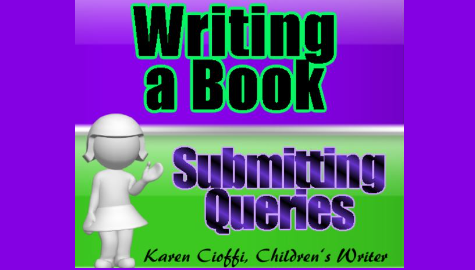
All writers face the dreaded query. Did I put enough information? Did I put too much? Did I have a great hook? Am I submitting to the right publisher or agent?
These are just a few questions that run through a writer’s mind when mailing or clicking the send button for the query. So, how do you answer these questions and the many others that go along with the job of crafting a query?
Well, the first simple response to this question is to READ the publisher’s or agent’s guidelines.
Okay, that’s not accurate; you need to STUDY and FOLLOW those guidelines precisely.
Items to watch for when reading those guidelines:
1. What genre does that particular publishing house, agent, or magazine publish?
2. Does the publisher/agent accept simultaneous submissions (see below for explanation)?
3. Is there a specific word count involved if querying for articles?
4. Does the publishing house accept unagented queries?
5. Does the magazine only accept specific themes? If so, is your article on target?
This list is not complete; there are obviously more items to watch out for. So, we go back to the main rule for querying: FOLLOW the GUIDELINES!
However, following the guidelines is just part of the querying process; you also need to know some essentials to include.
SIX RULES TO USE THAT WILL HELP YOU CREATE A WINNING QUERY
1. Be professional. Writing is a business just like any other, it’s important to treat it as such.
2. Be sure to include your contact information: address, telephone number, email address, and website.
3. If you were referred by someone, include it in the query. Every little bit helps but be sure it’s a referral from someone the editor actually knows.
4. Write tight; be specific and jump right in. You want to provide enough information to motivate the editor to want more, but you need to keep it to one page.
5. The body of the letter
A. The first paragraph should explain that you’ve visited the company’s website and found they are accepting your genre. You might also explain that, ever since you read (name of the book they published), you bookmarked their website. Or, you might simply state that you are submitting your manuscript for her review.
In this paragraph, you can include the genre and the word count.
EXAMPLE:
Dear [Editor’s Name],
I’d like to introduce my 15,000-word fantasy chapter book, WALKING THROUGH WALLS, for your consideration. It is in the flavor of A SINGE SHARD by Linda Sue Park.
B. The second paragraph is the pitch. Within a couple of sentences, you need to hook the editor or agent. Give a brief description of the story, just the essentials.
EXAMPLE of a first sentence for this paragraph:
In 16th-century China, Wang works in the rice fields with his father, but this is not the life he wants.
In just one sentence, the time period is established along with the setting and conflict.
C. The third paragraph should mention relevant comps (see below for an explanation).
D. Your brief and very relevant bio. Limit personal information unless it adds to your credentials as a writer qualified to write for this publisher. If you’re an expert in the field you’re writing about, mention it. If you’re an experienced marketer, mention it. If you have ‘good’ or ‘great’ social media connections, mention them. Also, note any publishing credits you have.
This is also the place you’ll briefly mention your marketing platform.
I had a client who, at the time she was querying agents, had around 45,000 Facebook followers and around 15,000 Instagram followers. She also had a website. These are definitely worth mentioning!
Publishers and agents appreciate it when authors already have an author platform up and running. In fact, if a contract is between ‘platformless’ you and another author who is equally qualified, but does have a platform in place, guess who’ll get that contract.
E. The fifth paragraph is your conclusion. Thank the editor/agent for his time, and mention whether you are enclosing a SASE (self-addressed, stamped envelope) and whether the query is a simultaneous submission.
A good way to practice for queries and pitches is to write a one-sentence out-of-the-ball-park description of your manuscript. This will help you think and write more tightly and choose the perfect words to hook the reader and convey the essence of your story.
*Simultaneous submission is when you submit to multiple publishers or agents at the same time. Some companies don’t allow this, so one more reason to read the guidelines carefully.
Three Extra Tips
- It’s advisable to query an agent first; it will help you get into a good publishing house. Submitting directly to publishing houses limits your playing field.
- If submitting to publishing houses, take extra care that they’re ‘real’ traditional houses. A real traditional publisher will never ask you for money.
- If you do get a contract, it’s best if you have someone (a professional) review the contract before signing it.
I hope this article helps you write a winning query!
MORE ON WRITING FOR CHILDREN
Self-Publishing: 3 Tips to Help You Avoid the ‘I Want It Now Syndrome’
Writing Rhyme in Children’s Stories
Is Your Manuscript Ready for Submission?

I’m a working children’s ghostwriter, rewriter, editor, and coach. I can help turn your story into a book you’ll be proud to be the author of, one that’s publishable and marketable.
OTHER HELP I OFFER:
HOW TO WRITE A CHILDREN’S FICTION BOOK
A DIY book to help you write your own children’s book.
FICTION WRITING FOR CHILDREN eCOURSE
4-Weeks / 8 Sections Guided Self-Study Mentoring Program
WRITERS ON THE MOVE SELF-PUBLISHING SERVICE
Self-publishing help for children’s authors
(Picture books and chapter books)
You can contact me at: kcioffiventrice@gmail.com.
